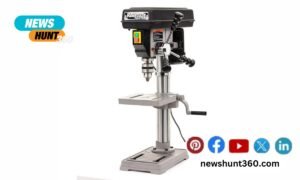With winter coming, sports will move indoors, but what will happen with the playing fields? Soccer coaches want the surfaces preserved for the next season, but what does that involve?
When players practice and hold games on artificial turf soccer fields, these require minimum maintenance compared to preparing grass surfaces when winter has come and gone. Usually, a large grass field will require spring clean-up involving mowing, adequate weed control, and pest prevention to avoid harmful insects.
While there’s always maintenance following a harsh winter, artificial turf will prove durable and capable of withstanding abuse. Let’s learn what sort of surface clean-up will be required when the spring season is in full swing.
What Tips Will Help With Artificial Turf Soccer Field Maintenance After Winter
As a rule, artificial turf soccer fields require minimal maintenance. Unlike grass, there’s no need to mow, perform weed control or pest prevention which usually involves harmful pesticides.
That doesn’t mean there isn’t any maintenance involved with the surfaces in preparation for the spring season after a harsh winter. The clean-up is just not as intensive as it would be for an authentic grass field. Find a turf maintenance guide at https://www.linkedin.com/pulse/maintenance-guidelines-sports-turf-brian-norton. Then look at a few tips for soccer field maintenance here.
● General artificial turf maintenance after winter is necessary
This product offers many benefits, including the fact there is minimal maintenance like mowing, plus there is no need to use harsh pesticides capable of creating a toxic environment for those playing. Gardeners are not stuck with clippings and have no location where these can be readily disposed of.
The surface still needs to be maintained to look ideal for soccer games when the team is playing for an audience. The indication is there would only be a small number of supplies for care and upkeep, including a standard gardening hose, rake, and push brook.
After the winter, there will be debris that needs to be removed. You should go through and pick up anything large and then sweep away smaller pieces. The surfaces should be washed with the garden hose using a sanitizing solution if there is any animal waste.
When this dries, you will use the rake to pull it from the material to prevent the material from matting.
● Vary the areas where the team performs their drills
Reminiscent of carpet in the way you will notice under furniture, the carpet appears fresh and clean, and the pile is high, but in the high traffic areas, it’s worn and could use freshening; soccer turf is comparable. If the team practices and performs drills in the same field space, there will eventually be worn patches and uneven areas of wear and tear.
The suggestion is to vary the spaces where you have the players practice and let them work together in smaller groups. You can allow more room for everyone to spread out, with the team taking advantage of the entire field instead of staying in just one area. Go here for guidance on playing on different surfaces.
● Inspections should be done regularly to check for defects or damages
Periodically, the indication is you should walk the entire surface to inspect the soccer field thoroughly for any potential defects or damages, particularly after the winter when you’re preparing for a new season and then again when the season comes to an end. If there are any problems, a player could trip up or get hurt while playing, making it essential to do these checks relatively often.
Any holes or areas that become low need to be filled, so water doesn’t gather and create unsafe conditions for the players. The priority is to protect each player by offering optimum protection.
The indication is that no one should play on the field that day if footprints are created on the surface, muddied spaces or water are lying in any areas, or if they make squishing noises while walking. This would be considered an unsafe surface.
● Make sure the players use the proper footwear
A new soccer member would likely consider cleats the go-to footwear, but these are not necessarily the ideal shoe for each field. It’s based on whether there is natural or artificial grass and what sort.
A firm soccer cleat would be necessary when playing on grass, but these are not ideal for artificial turf. “Turf soccer shoes” boast the safest when playing on a “carpet” sort of synthetic surface.
You can also obtain “artificial grass cleats” that are beneficial with materials offering grass height of one to two inches. Advising payers of the type of shoe to purchase before the season begins is essential.
Final Thought
We’re buckling down for the winter seasons meaning outdoor sports are closing. Before heading indoors, make sure to inspect your soccer fields for any defects or damages and do so again when the spring season is about to come in to avoid player injury.




